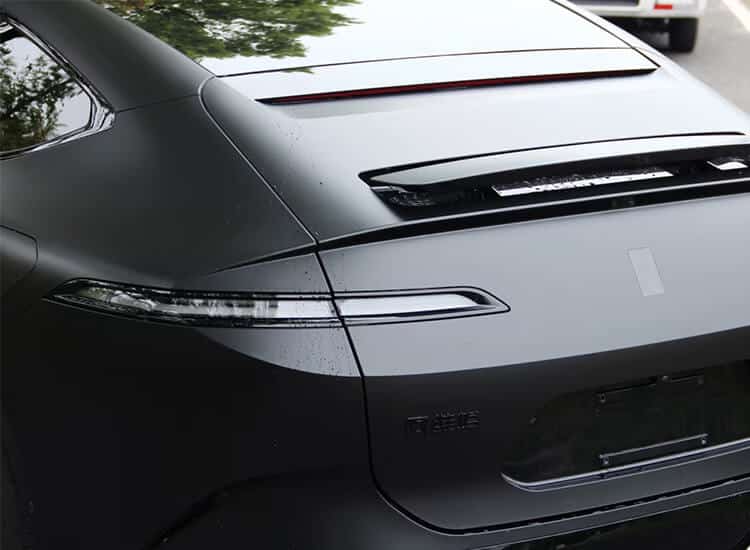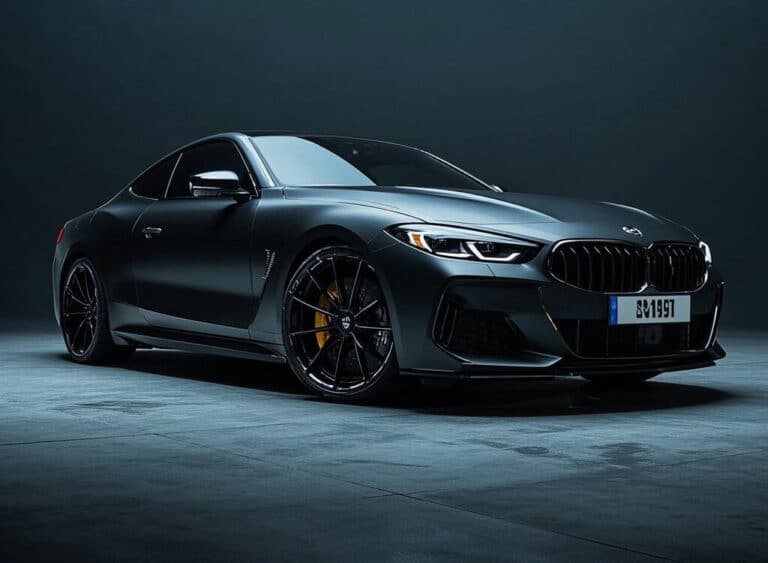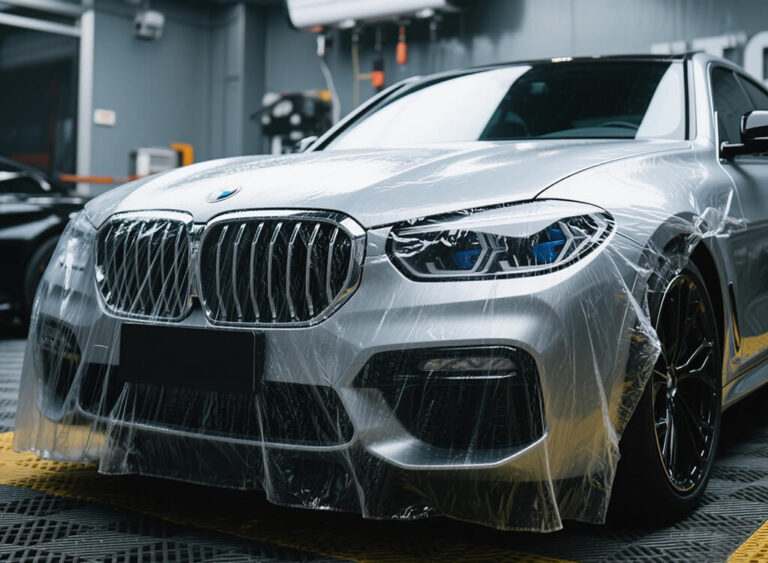The Best Paint Protection Film for Cars on The Market
If you’re serious about preserving your vehicle’s paint, Paint Protection Film (PPF) is a game-changer. Designed to shield against rock chips, scratches, and environmental damage, PPF is a must-have for car enthusiasts, luxury vehicle owners, and those who want to maintain their car’s resale value. However, with so many brands and variations available, selecting the best paint protection film for cars can be overwhelming. This guide dives deep into top-rated PPF, material comparisons, installation methods, and expert recommendations to help you make the right choice.

What to Look for in the Best Paint Protection Film?
Not all PPFs are created equal. A high-quality automotive urethane protection film should offer the following key features:
1. Self-Healing Technology
Modern self-healing paint protection films can repair minor scratches and swirl marks with heat exposure from the sun or a heat gun. Brands like XPEL Ultimate and SunTek Ultra are well-known for their self-healing properties.
2. Hydrophobic & Stain Resistance
A hydrophobic paint protection film repels water, dirt, and grime, making maintenance easier. Some PPFs, like SunTek Ultra and LLumar Platinum, feature built-in hydrophobic coatings, while others require an additional ceramic coating.
3. Clarity & Finish Options
A crystal-clear paint protection film should be virtually invisible once installed. Look for PPFs with high optical clarity and minimal orange peel texture. For those who prefer a sleek satin look, matte PPFs are also available.
4. Thickness & Impact Protection
The best PPF for rock chip protection should have a thickness of 8-10 mils, offering excellent resistance to stone chips and road debris without compromising flexibility.
5. UV & Yellowing Resistance
A UV-resistant paint protection film prevents discoloration over time. Some lower-quality PPF may turn yellow due to prolonged sun exposure, but premium options like XPEL Ultimate and 3M Scotchgard Pro are designed to resist UV degradation.
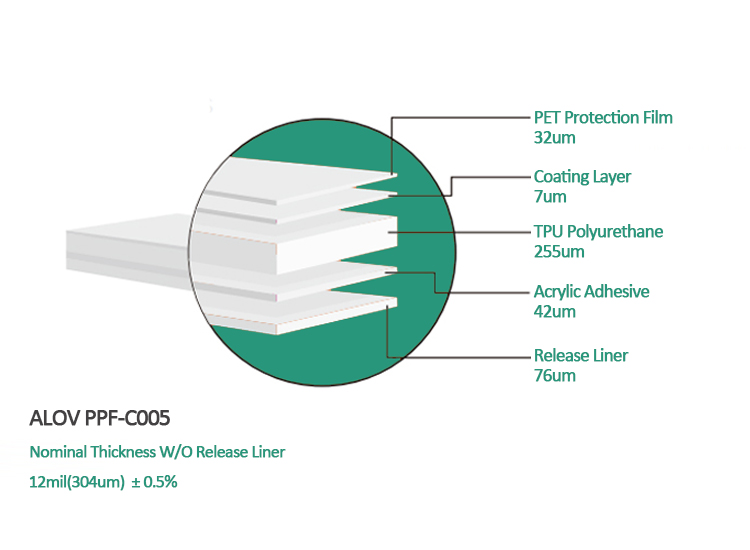
Top Paint Protection Film Brands: In-Depth Comparison
To help you find the best PPF, here we list paint protection films from top PPF brands. Let’s compare the leading brands based on material, features, and estimated pricing.
PPF Performance Comparison on The Market
| Feature | XPEL Ultimate Plus | 3M Scotchgard Pro | SunTek Ultra | LLumar Platinum | STEK DynoShield | ELOV PPF Series |
| Material | TPU | TPU | TPU | TPU | TPU | TPU |
| Self-Healing | Yes | Yes | Yes | Yes | Yes | Yes |
| Hydrophobic Top Coat | Yes | No | Yes | Yes | Yes | Yes |
| Thickness (mils) | 8 | 6.5 | 8 | 8 | 8 | 6.5-12 |
| Clarity | High | Medium | High | High | High | High |
| UV & Stain Resistance | Yes | Yes | Yes | Yes | Yes | Yes |
| Warranty | 10 Years | 7 Years | 10 Years | 10 Years | 10 Years | Custom Options |
| Estimated Price (Full Car Installation) | $5,000 – $8,000 | $3,500 – $6,000 | $4,500 – $7,000 | $4,500 – $7,000 | $5,000 – $8,000 | $1500-$3000 |
| Best For | Luxury & Exotic Cars | Budget Buyers | Balanced Performance | High Gloss & Durability | Exotic Car Customization | OEM & Bulk Orders |
About these top PPF manufacturers:
• XPEL Ultimate Plus is the most popular premium PPF, offering self-healing, strong durability, and excellent clarity, but at a higher price point.
• 3M Scotchgard Pro is more affordable but lacks a hydrophobic top coat, meaning less water and stain resistance.
• SunTek Ultra and LLumar Platinum provide great clarity, self-healing, and built-in hydrophobic protection, making them excellent all-around choices.
• STEK DynoShield is ideal for high-end customization, offering unique textures and colors, but at a premium price.
• ELOV PPF offers custom formulations, private-label options, and bulk pricing, making it a top choice for wholesalers, OEM buyers, and private-label brands.
Clear Bra vs. Paint Protection Film: What’s the Difference?
Many people confuse clear bras with paint protection film. While both terms are often used interchangeably, clear bra originally referred to the earliest version of PPF, which covered only the front bumper, hood, and fenders.
Modern PPF technology allows for full-body applications, offering better clarity, self-healing properties, and hydrophobic coatings compared to early clear bra solutions.
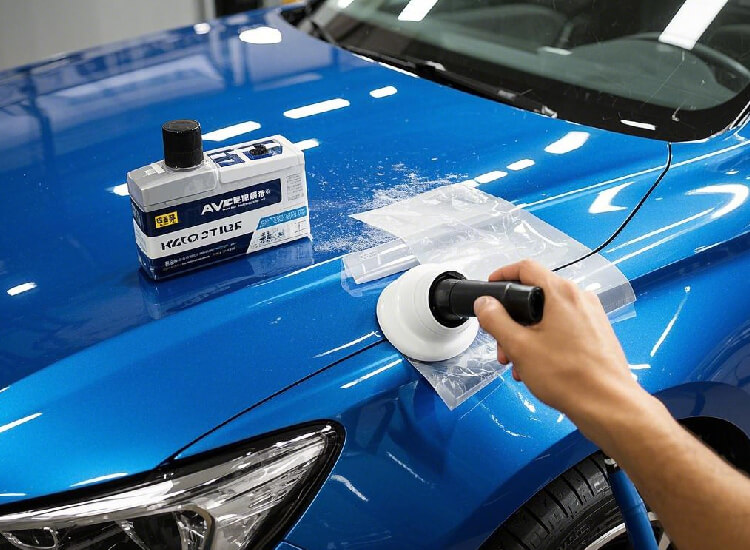
PPF vs. Ceramic Coating: Which Is Better?
If you want full scratch and rock chip protection, PPF is the way to go. Ceramic coatings enhance shine and hydrophobicity, but they don’t provide impact protection. For best results, some car owners combine PPF with a ceramic coating. Please get the full comparison of PPF vs. Ceramic Coating.
PPF vs. Ceramic Coating Features
| Feature | PPF (Paint Protection Film) | Ceramic Coating |
| Scratch Resistance | High | Low |
| Rock Chip Protection | Yes | No |
| Hydrophobic Effect | Yes (if coated) | Yes |
| Self-Healing | Yes | No |
| UV & Stain Resistance | Yes | Yes |
| Durability | 5–10 years | 2–5 years |
| Ease of Application | Requires professional installation | DIY-friendly |
| Appearance Enhancement | Maintains original finish | Adds deep gloss & shine |
| Cost (Partial Application) | $800 – $2,500 | $300 – $800 |
| Cost (Full Vehicle Application) | $4,000 – $8,000 | $1,000 – $2,500 |
Which One Should You Choose?
Choose PPF if you want maximum physical protection against rock chips, scratches, and debris. It’s ideal for high-end, luxury, and performance cars.
Choose Ceramic Coating if you want enhanced gloss, hydrophobic properties, and ease of cleaning, but can accept minimal scratch resistance.
Best Solution: For ultimate protection, many car owners apply PPF on high-impact areas (hood, bumpers, fenders) and ceramic coating over the rest of the vehicle.
Market Price Comparison of Different PPF Types
PPF prices vary based on material, features, and brand. High-end TPU PPF is priced between $20 – $50/m², mainly targeting luxury vehicle owners seeking long-term protection. Mid-range TPU PPF costs $10 – $20/m², making it a popular choice for commercial vehicles and mid-range sedans. TPH PPF, an economical option, is priced between $5 – $15/m², catering to budget-conscious consumers. PVC PPF, the most affordable choice, ranges from $3 – $8/m², typically used for short-term protection, such as second-hand car refurbishing. ELOV post: TPU PPF Cost Guide
| PPF Type | Material | Price Range (per 60″x50′ roll) | Key Features |
| Glossy TPU PPF | High-quality TPU | $600 – $1,200 | Self-healing, UV protection, clarity |
| Matte TPU PPF | High-quality TPU | $650 – $1,300 | Satin/matte finish, self-healing |
| Colored TPU PPF | TPU with pigments | $800 – $1,500 | Custom color options, high durability |
| TPH PPF (Budget) | TPH (polyolefin) | $300 – $600 | No self-healing, lower durability |
| Ceramic-Coated TPU PPF | TPU with nano-ceramic | $1,000 – $2,000 | Hydrophobic, superior scratch resistance |
Which One Should You Choose?
Choose PPF if you want maximum physical protection against rock chips, scratches, and debris. It’s ideal for high-end, luxury, and performance cars.
Choose Ceramic Coating if you want enhanced gloss, hydrophobic properties, and ease of cleaning, but can accept minimal scratch resistance.
Best Solution: For ultimate protection, many car owners apply PPF on high-impact areas (hood, bumpers, fenders) and ceramic coating over the rest of the vehicle.
Reference: TPU vs PVC vs TPH
Professional PPF Installation vs. DIY Kits
When deciding between professional PPF installation and a DIY kit, it’s essential to consider factors like cost, expertise, and long-term durability. Professional installation ensures a flawless, bubble-free application with proper edge wrapping, resulting in a nearly invisible protective layer. Trained installers use specialized techniques to stretch and align the film seamlessly, reducing the risk of peeling or premature wear.
Partial Front End PPF: $800–$1,500
Full Front End PPF: $1,500–$2,500
Full Body PPF: $4,000–$8,000
On the other hand, DIY PPF kits are a more budget-friendly alternative for those willing to tackle the process themselves. While these kits can save money upfront, they require patience, precision, and the right tools to achieve a professional-level finish.
Ultimately, if long-term durability and aesthetics are your priorities, professional installation is the best choice.
How to Maintain Paint Protection Film for Long-Lasting Results
To maintain your paint protection film (PPF) for long-lasting results, avoid washing your car for the first 48 hours after installation to allow the film to fully adhere. When washing, always use a pH-neutral car shampoo to prevent damage. Avoid automatic car washes with abrasive brushes, as they can cause scratches or lifting at the edges. For added protection and improved hydrophobicity, consider applying a ceramic coating. Regular maintenance ensures your PPF remains effective and helps it last between 5 to 10 years without yellowing or peeling.
The Best Paint Protection Film for Cars
For car owners looking for premium protection, XPEL Ultimate Plus, SunTek Ultra, and LLumar Platinum are top choices. For wholesalers, OEM buyers, and private label brands, ELOV PPF provides high-quality TPU PPF at factory-direct prices, allowing bulk orders with custom formulations.
FAQs About Paint Protection Film
1. What is the best paint protection film for cars?
For premium protection, XPEL Ultimate Plus and SunTek Ultra are top choices. If you’re looking for OEM solutions, ELOV PPF offers bulk and private-label options.
2. How long does PPF last?
With proper care, PPF lasts between 5–10 years, depending on brand and environmental conditions.
3. Does PPF affect car resale value?
Yes! A well-maintained PPF preserves the factory paint, making the car more valuable to buyers.
4. Can I install PPF myself?
DIY kits are available, but professional installation ensures a flawless finish and longer durability.
| ELVO Offers Fast Paint Protection Film OEM |
| 25 Days |
| From Ideas To Mass Production |
| Start OEM For Your Brand Now! |

